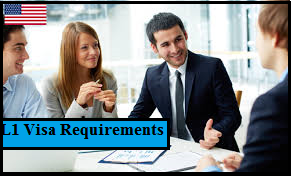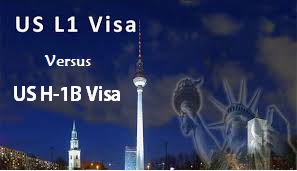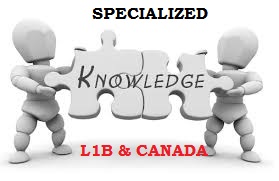What is a L1 Visa
Are you looking for opportunities to expand your business? Interested in working in the United States? The L1 Visa might be able to help you do that. Also known as the intra-company transferee, this Visa allows an eligible foreign worker to continue their employment in another branch of their company located in the United States.
Who is eligible to apply for L1 Visa?
In order to apply, you must be a manager, executive, or worker with specialized knowledge who is employed by a foreign company. Note that there are specific definitions of each category; you may only apply if you meet the American definition. For example:
- A manager refers to someone that supervises and controls the work of other employees. The L1 Visa will also accept managers of an essential function within the organization
- An executive refers to someone that directs the organization, or someone that directs an essential component of the organization
- A specialized knowledge worker is someone with special knowledge/skills that are specifically relevant to the services offered by the organization
Note that there is no requirement that the specialized knowledge be something that is unique; rather, it must be at an advanced level that is imperative to the smooth operation of your specific business.
L1 Visa Qualification Criteria
Other qualifications you must have in order to apply include work experience; you must have been working abroad for at least one full year within the 3 years preceding the time you apply. Your company abroad must be related to the business you will establish in the US, and both branches of the company must continue to do business after you have started your business in the United States.
If you meet this criteria, you will be able to apply for the L1 Visa. This is essentially a temporary nonimmigrant visa, which allows you to enter the US and work for the company you specified in your application.
I applied for L1 Visa can my family join me?
If you have been granted an L1 visa, your spouse will also be able to receive an L2 Visa. This is a dependent visa that allows the holder to accompany an individual with an L1 Visa to the United States. It will be valid for as long as the L1 Visa is. Furthermore, an L2 Visa holder will be able to work in the United States after they apply for and obtain an Employment Authorization Document (EAD). As an L2 Visa holder, your application for the EAD will be approved and you will be able to work part-time or full-time in any legal job in the United States. Before working, however, you will need ensure that you have received both an EAD and Social Security Number (if you did not already have one).
If you are a holder of the L1 Visa, your minor (under the age of 21) children who are unmarried will also be given an L2 Visa. However, dependent children will not be able to apply for an Employment Authorization Document (EAD) and thus cannot work in the United States.
What documents do I include in my L1 Visa application?
Proving Qualifying Relationship
Your application must demonstrate certain elements that are necessary to obtain the L1 Visa. To begin, you must prove that the new US office will have a business relationship with the foreign company you originally worked at. In other words, you must demonstrate that the new US office will be a parent, affiliate, subsidiary, or branch of the original office and that both offices will continue to share common ownership and control. This is called demonstrating a Qualifying Relationship between the two business entities. You can do this by providing additional documents that evidence the relationship between the two. This includes business licenses, article of incorporation, annual reports related to the business, contracts, corporate filings, or other documents that clearly state the business name and relationship between the two entities.
Proving Secured Office Space
The second thing you will need to demonstrate is that you have secured physical space for the new office. This can be done through a lease, purchase, etc. The amount of physical space will vary depending on the nature of the business, but an appropriate amount to safely run your business should be secured. You can prove that this physical space has been allocated by including your signed lease agreement, mortgage, business plan connecting activity and space required, or other real estate documents within your application.
Proving you Work Full Time Abroad
You also would need to demonstrate that you meet the requirement of working abroad for one full year within the last three years. You can do this by including documents such as: pay stubs, payroll records, tax returns demonstrating employment, or evidence of work products. The other requirement you will need to fulfill is the job type (managerial, executive, or specialized knowledge). You can prove your job type by including documents such as organization charts, performance reviews, resumes, organizational job descriptions, patents, or loans/financing on behalf of the company.
L1 Visa Documents
Note that there is no limit to the amount of documents you can include. In general, the more documents you include that clearly demonstrate your eligibility, the stronger your application will be. However, you will need to ensure that you submit proper documents; some documents require photocopies while others require originals. Refer to the U.S. Citizenship and Immigration Services website to confirm whether your documents are acceptable.
How long will the L1 Visa be valid for?
Your initial L1 Visa will be valid for a maximum of one year. After this point, however, you will be permitted to apply to extend your L1 Visa. These extensions can be granted at 2 year increments and you may only apply for 3 extensions. This is because the limit of extensions is 7 years.
As an L1 visa holder, you may still eventually apply for a Green Card (Permanent Residency). This is the case for most L1 holders who have expended their ability to extend their L1 Visa. You may file for an Adjustment of Status or an Immigrant Visa. Note that if this is your intention, it will not be a reason for an initial denial of your L1 Visa application.
Are there any circumstances where I would not need to apply for an L1 Visa?
Blanket Petition
If your organization has already filed for a Blanket Petition, you may not need to file for an L1 Visa. The Blanket Petition will establish the intra-company relationship before you would need to file for your individual L1 Visa. However, only certain organizations are eligible to apply for a Blanket Petition. For example, one of the criteria includes that the petitioner must have an office in the United States which has been actively doing business for one year or more as well as have three or more domestic and foreign branches. For a full list of criteria to see if you are eligible for Blanket L Certification, visit the U.S. Citizenship and Immigration Services website.
Blanket Petition Approved
If the Blanket Petition has been approved, the employer will need to send Form 129-S as well as the Blanket Petition Approval Notice to the employee for him/her to send along with just the application form for the L1 Visa. If you are a Canadian citizen, you are exempt from the L1 Visa requirement. You will only need to present the Blanket Petition Approval Notice and Form 129-S (which is to be completed by the employer) to the US Customs and Border Protection Officer to gain L1 status (after which you can work in the United States).
Contact Akrami & Associates
If you are seeking L1 status or have questions about your eligibility, consider the dedicated team at Akrami and Associates. We will be happy to assess your situation and answer further questions you may have. With Akrami and Associates, there is always a way!




